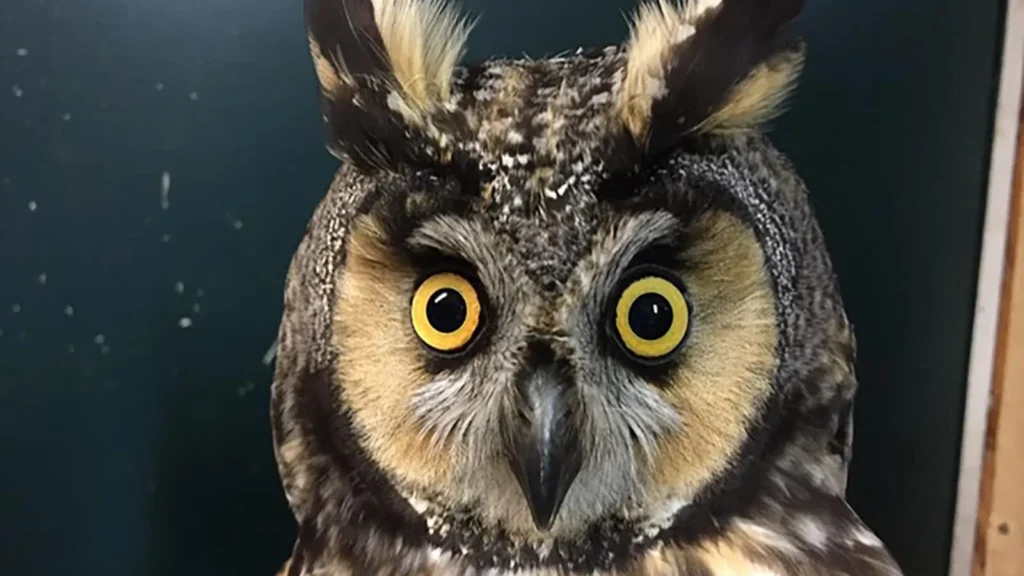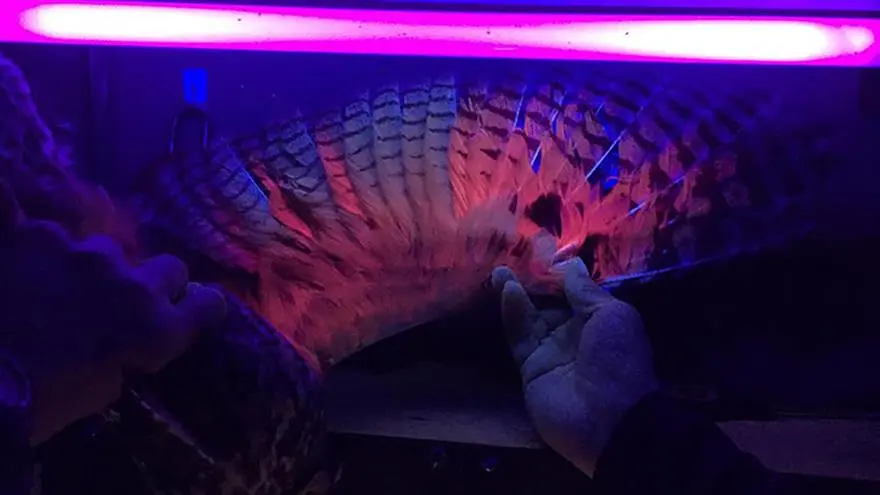While the physical differences among wildlife are often quite noticeable to the human eye, new research from Drexel University’s College of Arts and Sciences suggests that there are likely even more variations that remain hidden from our perception. A recent study, published in The Wilson Journal of Ornithology, reveals the presence of fluorescent pigments in the feathers of Long-eared Owls—pigments that are only visible to humans when ultraviolet light is used.
The study, led by Emily Griffith, a PhD candidate in Drexel’s Biodiversity, Earth & Environmental Science department, shows that these fluorescent pigments vary within a population of Long-eared Owls. This variation could provide insight into the purpose of the pigments, which were previously overlooked.
To conduct the research, Griffith and her team used a fluorometer, a device that measures the light emitted by materials after absorbing UV radiation, to assess the fluorescence in the feathers of Long-eared Owls migrating through Michigan’s Upper Peninsula in the spring of 2020.
“We are just beginning to describe the presence of fluorescent pigments in birds and other vertebrates,” Griffith said. “While it’s important to identify which species have these pigments, understanding their function requires us to look at how they vary within species, such as the Long-eared Owl.”

Traditionally, colorful feathers in birds are thought to be a trait of males, often used to attract females. However, Griffith’s research challenges this assumption. The study found that female Long-eared Owls actually have a higher concentration of these fluorescent pigments in their feathers than males, overturning the conventional idea that vibrant plumage is primarily a male characteristic. Moreover, the amount of fluorescent pigment found in the owls is not fixed but exists on a spectrum, influenced by factors such as size, age, and sex.
Griffith explained that fluorescent pigments have likely been used by animals for a long time, but until recent technological advances, scientists lacked the tools to properly study or even acknowledge them. Interestingly, these fluorescent feathers are already being used by some owl researchers to help age birds in the field, as the intensity of the fluorescence diminishes with time.
While the study of fluorescent pigments in Long-eared Owls is still in its early stages, Griffith and her team are excited about what lies ahead. Their research not only opens the door to understanding this hidden trait in owls but also in other bird species.
“So little is known about fluorescent pigments in bird feathers,” Griffith noted. “Owls aren’t the only ones with these pigments, so this is a really exciting time for those interested in studying bird plumage.”
